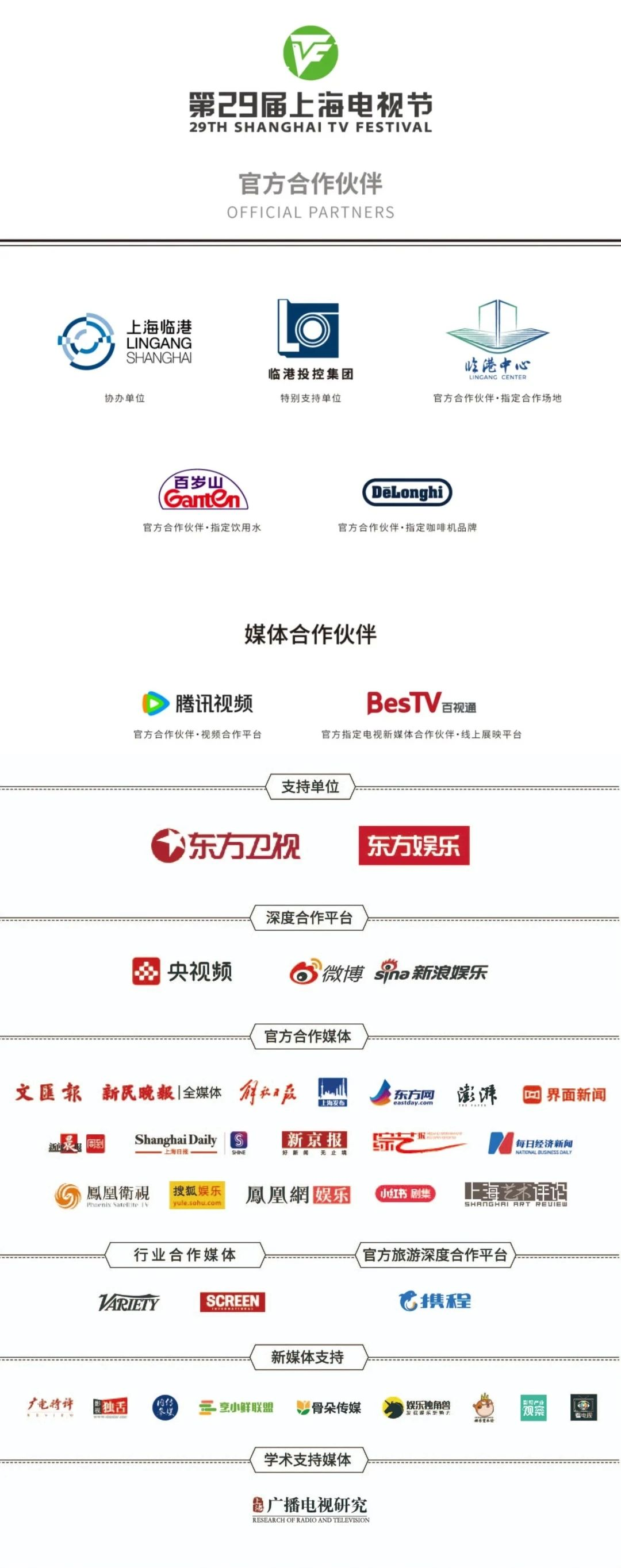STVFORUM | Build Bridges through Festivals to Transcend Geographical and Cultural Barriers with Great Stories
The international festivals serve as crucial platforms for the exchange of film and television content, significantly facilitating their overseas dissemination and driving innovation in the industry. In the face of opportunities and challenges in this new era, strengthening exchanges and cooperation with the international film and television community, and learning from advanced concepts and successful experiences, have become pivotal to China’s current efforts to expand its film and television content globally. On June 25, at the “International Festival Collaboration and Audiovisual Content Cooperation” held during this year’s Shanghai TV Festival, representatives from domestic and international television stations, international festivals, content platforms, as well as experts and scholars, engaged in in-depth discussions on topics such as trends in international communication and cooperation, China’s high-quality content and models for international expansion, and how international festivals contribute to empowering the development of the television industry. They collectively explored new opportunities for international communication and cooperation.
Shi Zhiyan, Associate Counsel of the International Cooperation Department, National Radio and Television Administration, delivered the opening speech at the forum. Dong Yan, Deputy Director General of Center for Intercontinental Communication Development of China International Communications Group, delivered the keynote speech. You Haiyang, Director and Associate Counsel of the Department of Radio, Television, and Online Audiovisual Programs of the Shanghai Municipal Administration of Culture and Tourism.
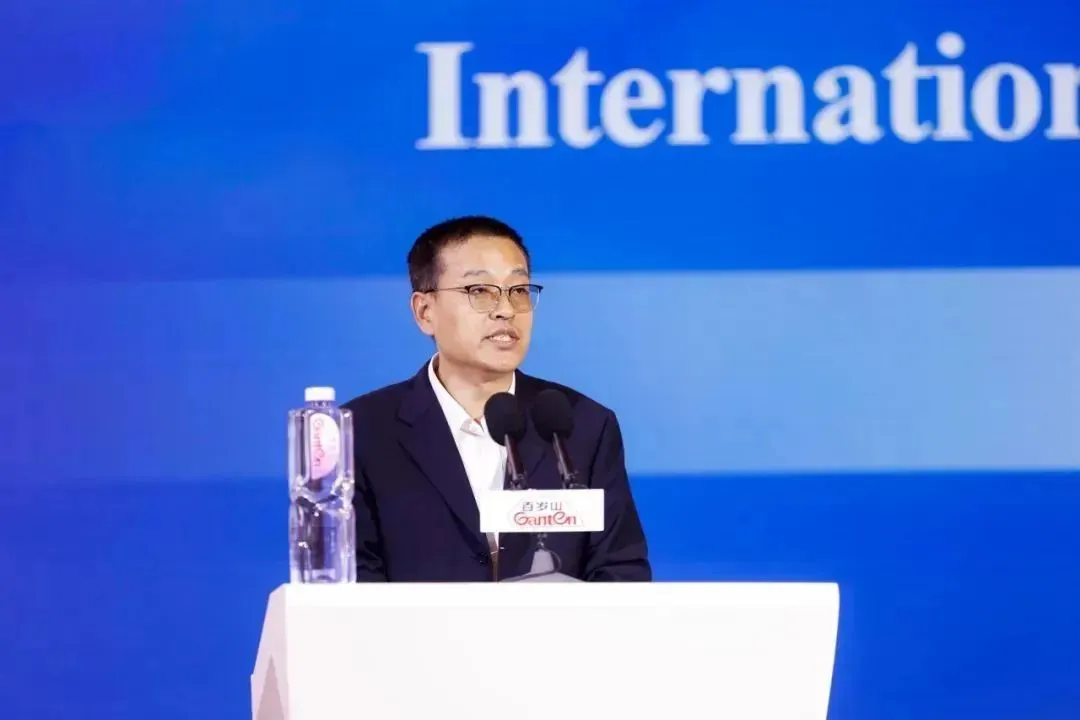
Shi Zhiyan
Associate Counsel of the International Cooperation Department, National Radio and Television Administration
International film and television festivals, as crucial platforms for global audiovisual exchange and cooperation, provide significant opportunities for copyright trade, co-production, and collaborative broadcasting of domestic and foreign audiovisual programs. On this occasion of STVF, I would like to propose several recommendations to strengthen Sino-foreign audiovisual cooperation. Firstly, enhance Sino-foreign co-productions to expand market opportunities through collaborative production, actively engaging in co-production and resource sharing, and leveraging complementary strengths, continually enriching the creative themes and artistic forms of audiovisual works, so as to offer audiences both domestically and internationally more high-quality productions that embody contemporary spirit and enduring value. Secondly, broaden communication channels to enhance the global impact of audiovisual products. It is imperative to promote the establishment of comprehensive, diverse, and integrated communication channels, so as to enable precise and effective dissemination of audiovisual programs on broader and deeper levels, particularly to collectively enhance the effectiveness and influence of international audiovisual content communication leveraging continuous innovation in communication and cooperative marketing channels with international organization. Thirdly, reinforce technological empowerment to cultivate a new ecosystem for radio and television development, embracing new technological advancements and reforms, strengthening technical exchanges and cooperation in the audiovisual field, jointly developing and utilizing advanced communication technologies, and innovating new formats and models in the audiovisual sector, thereby offering robust technical support to elevate the standards of the audiovisual industry.
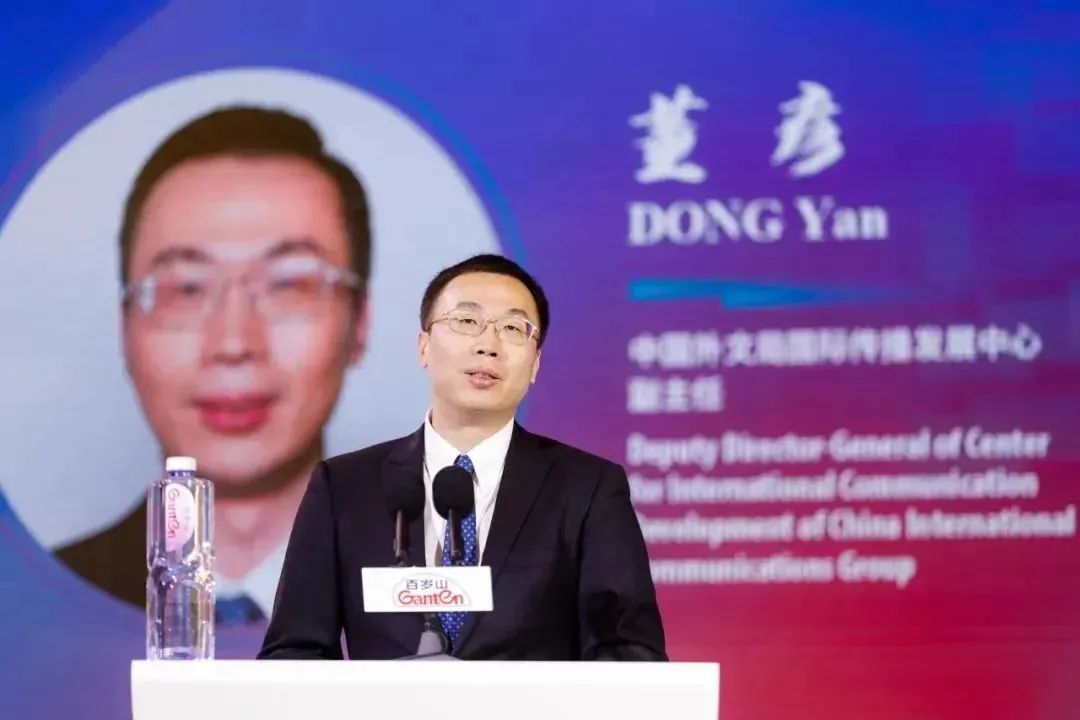
Dong Yan
Deputy Director General of Center
for Intercontinental Communication Development of China International Communications Group
How to utilize film and television as a “bridge” to showcase the diversity and unique charm of Chinese culture to the world, promoting mutual exchange and learning between civilizations? Here are my thoughts. Firstly, compelling stories have the power to transcend geographical and cultural barriers. We should prioritize originality and emotional impact in the creation process, delving deep into and presenting universal human emotions. Skillfully integrating elements of Chinese culture with the aesthetic and cognitive preferences of international audiences, we can touch their hearts with authentic and moving stories, showcasing the unique spiritual outlook of the Chinese nation. Secondly, international cooperation is a crucial avenue for promoting cultural exchange and dissemination. In its external exchanges and collaborations, China’s film and television industry should actively seek opportunities for Sino-foreign co-productions. By enhancing project development and production, learning from international advanced production concepts and technologies, and incorporating diverse perspectives, we can enrich the cultural content of film and television works. Thirdly, open collaboration is a key strategy for expanding international channels of communication for Chinese film and television. In the "grand chorus" of telling Chinese stories well, government bodies, enterprises, industry institutions, and civil organizations, as dissemination entities, should leverage their respective strengths and characteristics to synergize efforts. Additionally, by fully utilizing important platforms such as international film and television festivals through participation, screenings, and exchanges, we can increase the exposure and reputation of Chinese film and television works on the international stage, thereby further enhancing our international influence. Such comprehensive and multi-channel collaborative efforts will inject strong momentum into the internationalization of China’s film and television industry, helping Chinese stories to resonate with more people worldwide.
Roundtable 1
How international festivals and exhibitions empower innovation in the television industry


Chen Guo,
Managing Director of Shanghai International Film & TV Festivals, Co., Ltd.
This year’s Shanghai TV Festival has seen a significant increase in the number of forums and market activities compared with last year. We hope each participant can remain occupied, moving from one event to another, to gather more fresh information. We aim to leverage the international exchange platform to its fullest extent, inviting as many domestic and foreign guests as possible to participate in face-to-face exchanges. This year, we have also invited film and television institutions from countries like the UK and Japan to announce their latest policies on co-production and distribution, ensuring firsthand information for global TV professionals in Shanghai. In addition to enriching the diversity of our events, we are also deeply concerned about market transactions. Our ultimate goal is to facilitate more deals among film and television enterprises here. In recent years, the international market has been rapidly recovering, with overseas buyers returning to us. This year, we have significantly increased invitations to overseas buyers compared with previous years. We have also proactively helped these buyers identify potential Chinese clients beforehand, arranging dedicated time slots for them to have one-on-one negotiations and personally present their products to potential clients. For instance, today we had a buyer from a Brazilian television station visiting China for the first time. We matched them with several potential Chinese film and television enterprises, hoping to facilitate cooperation between them.

Kent Lyu
Chief Representative for East and Central China, Hong Kong Trade Development Council
Hong Kong is a crucial gateway for Mainland Chinese film and television productions to go global, and for overseas film and television enterprises to enter the vast Mainland market. As part of Hong Kong’s “Eight Key Roles” outlined in the 14th Five-Year Plan, one role is designated as the “Center for Cultural and Artistic Exchange between China and the World”. Annually, the Hong Kong Trade Development Council hosts the Hong Kong International Film & TV Market (FILMART), Asia’s premier platform for promoting and trading entertainment content. FILMART has consistently facilitated Mainland and Asian entertainment companies’ expansion overseas through film and television productions, and supported overseas enterprises in entering Asia and the Mainland’s extensive film and television markets. This includes facilitating collaboration and partnerships in film and television project development, investment and production, artist resources, overseas distribution, and merchandise development. Moreover, Hong Kong itself serves as an excellent regional cooperation platform. In recent years, Chinese content has gained increasing popularity and favor among overseas audiences. Hong Kong actively promotes industry cooperation and uses its platform to tell compelling Chinese stories globally. For instance, during this year's FILMART, a special presentation was held for NOTHING BUT THIRTY, announcing its remake in Thailand. The series has already secured partnerships with leading platforms in Japan, South Korea, Vietnam, Indonesia, and other regions. Additionally, during FILMART, Shanghai Youhug Media Co., Ltd. signed a cooperation agreement with a Russian client for overseas distribution of CROSS FIRE, and they showcased THE LEGEND OF HEROES. Currently, they are in the process of finalizing agreements with clients in Vietnam and Thailand in Southeast Asia.

Priyanka Sridarane
Asia Sales Manager, Reed MIDEM’s MIP Markets
As the organizer of an international festival, our primary responsibility is to further support local content in their efforts to go global and engage in international cross-border exchanges. Additionally, with representatives from a hundred countries participating in our festival on a large scale, each bringing rich and diverse cultural backgrounds, our aim is to ensure maximum visibility for all exhibitors. We achieve this by organizing numerous forums, screenings, and even providing support through advertising resources to promote exhibitors’ content to our audience. Furthermore, we strive to facilitate social interaction through various structured networking events such as small roundtable talks and cocktail parties, creating relaxed and informal settings for networking. Additionally, we tailor matchmaking sessions based on the specific needs and objectives of exhibitors. For instance, we categorize and pair exhibitors based on their target countries and markets for international expansion, whether they seek funding or production partnerships, thereby facilitating connections between supply and demand sides.
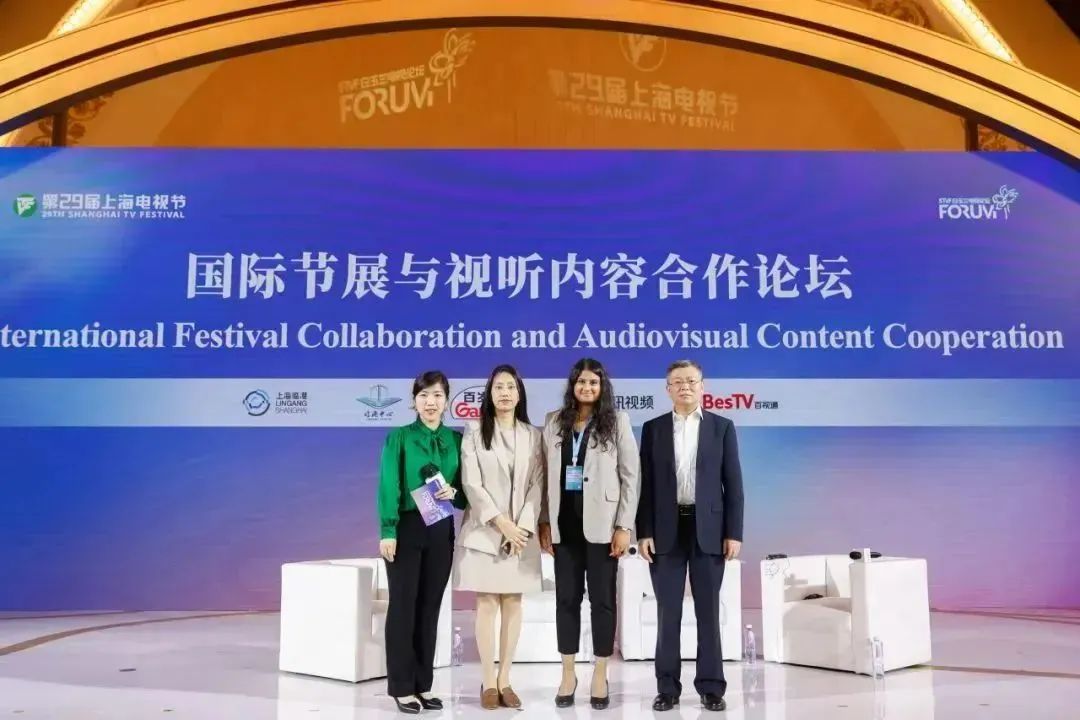
Roundtable 2
Sharing of trends in international distribution and cooperation of television content
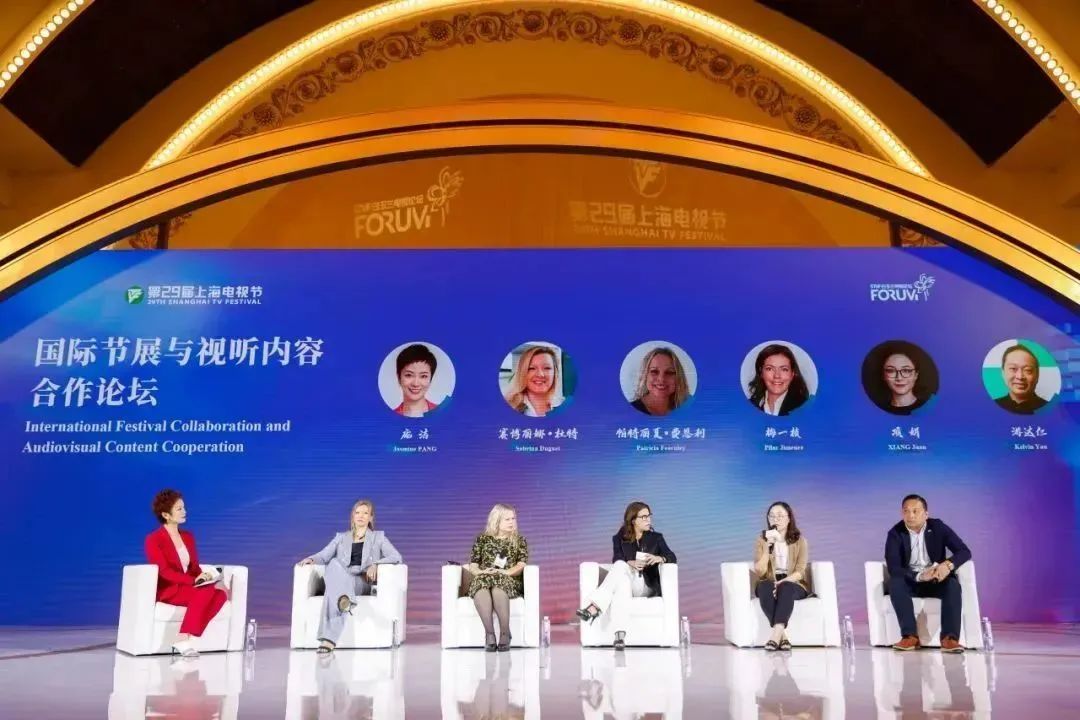

Sabrina Duguet
Executive Vice President of All3Media Asia Pacific
Our group produces approximately 4,000 pieces of content annually, many of which are tailored specifically for the local market without a mandate for international distribution. However, internally, we assess these productions to determine their suitability for specific regional markets and apply to participate in particular festivals and exhibitions. For example, during our current visit to Shanghai, we have selected specific content for promotion. Over the past seven years, we have focused extensively on documentary productions, many of which were filmed in China. These productions have achieved significant success worldwide, including documentaries about Confucius and Chinese schools, effectively promoting Chinese culture internationally. Recently, a documentary about the Terracotta Warriors aired on Netflix and gained high popularity. This project traces back to the 1970s when we began relevant work in China. We have also distributed a series about Chinese New Year created by Lion TV for BBC, which has garnered over a hundred million viewers in China, contributing greatly to the international promotion of traditional Chinese culture. China boasts numerous fascinating stories, making it a rich source for documentary production. In the future, we aim to continue sharing these stories with the world.

Patricia Fearnley
Head of Factual Co-productions, BBC Studios
Firstly, we need to recognize that not all types of content are suitable for international distribution. Therefore, before production begins, we should carefully consider how to make our content more appealing to international audiences and how to effectively market it. It’s well known that natural history and science series are iconic programs for the BBC, but in our collaborations with different countries and regions, we also seek innovative approaches to reach our target audience. For instance, in China, we might invite well-known local celebrities to do voiceovers to connect more closely with the audience. Additionally, our collaborations with Chinese musicians have been quite successful. Integrating local elements into the production process is essential. We often require program guests to speak in the native language of the target market, rather than exclusively in English. For our documentaries, we sometimes include interviews with local audiences, which adds a sense of familiarity and authenticity. It’s crucial for us to always be aware of who our target audience is so that we can better incorporate their preferences into our production processes.

Pilar Jimenez
CEO of Mediapro Group Asia Pacific
I live in China, so I have the opportunity to watch Chinese-related content myself. I believe that in the near future, Chinese content will achieve great success worldwide. From a marketing perspective, the visibility of Chinese film and television content in the international market is increasing day by day. Moreover, China now has international platforms like iQIYI and Tencent, so when you produce a program domestically, these platforms can reach over 90 countries and regions simultaneously, which has a significant impact. THE HEAD is the most important series from TMS, a perfect example of international production that has been widely distributed globally. The series has expanded into a trilogy, with the first part released in 2020, the second in December 2022, and the third scheduled for the fourth quarter of 2024 (to be confirmed). It demonstrates how a series can spread and succeed across vastly different markets and audiences. Similarly, this series is an example of content that breaks cultural and language barriers to reach a broad global audience as much as possible.

Xiang Juan
Head of Overseas Business Center, Tencent Video
In overseas markets, an increasing genres of Chinese TV dramas are becoming favorites among international users. However, the most popular genres remain historical dramas and urban romance, with related works achieving great success abroad every year. Besides traditional series, variety shows have also become a main force in “going global”. This year, our production and broadcast of CHUANG ASIA introduced mature Chinese IPs to overseas audiences, creating an Asian variety show. The program not only achieved unprecedented viewership and commercial returns but also successfully launched its own girl group. In terms of publicity, we have built a leading social media matrix within the industry, amassing over 100 million fans globally. This is one of the crucial means for us in content promotion. Additionally, we have brought some product features characterized in China that allow interaction with users for development and launch in overseas platforms - for example, the bullet comment function. Initially, local users may feel unfamiliar with this feature, but as they see other users engaging in real-time discussions through this feature, generating emotional resonance, more users join in, making it an effective channel for promotion and user interaction.

Kelvin Yau
Vice President of Overseas Business Division and Head of Asia-Pacific, iQIYI
Nowadays, our Chinese-language content is almost simultaneously available both domestically and internationally. Not only do we provide subtitle translation services locally, but we also offer dubbed versions that can be launched simultaneously. This is highly demanded by many overseas audiences because it reduces barriers, making it easier for more people to watch and enjoy our Chinese-language content. Recently, we brought TO THE WONDER to the Cannes International Series Festival, where we are not only shortlisted for the main competition section but also premiered through an event. Through this series, we introduced local culture and cuisine to many overseas viewers, sparking their strong interest as a result. Additionally, we have conducted extensive online promotions in overseas markets. In Thailand, we partnered with local TV stations to establish a fixed time slot for iQIYI Chinese-language content every afternoon, making it easier to cultivate local viewing habits among audiences. We also engage with young audiences through campus events such as Hanfu shows and viewing parties to gather feedback on their preferences for Chinese content, providing valuable insights for developing online promotional strategies.
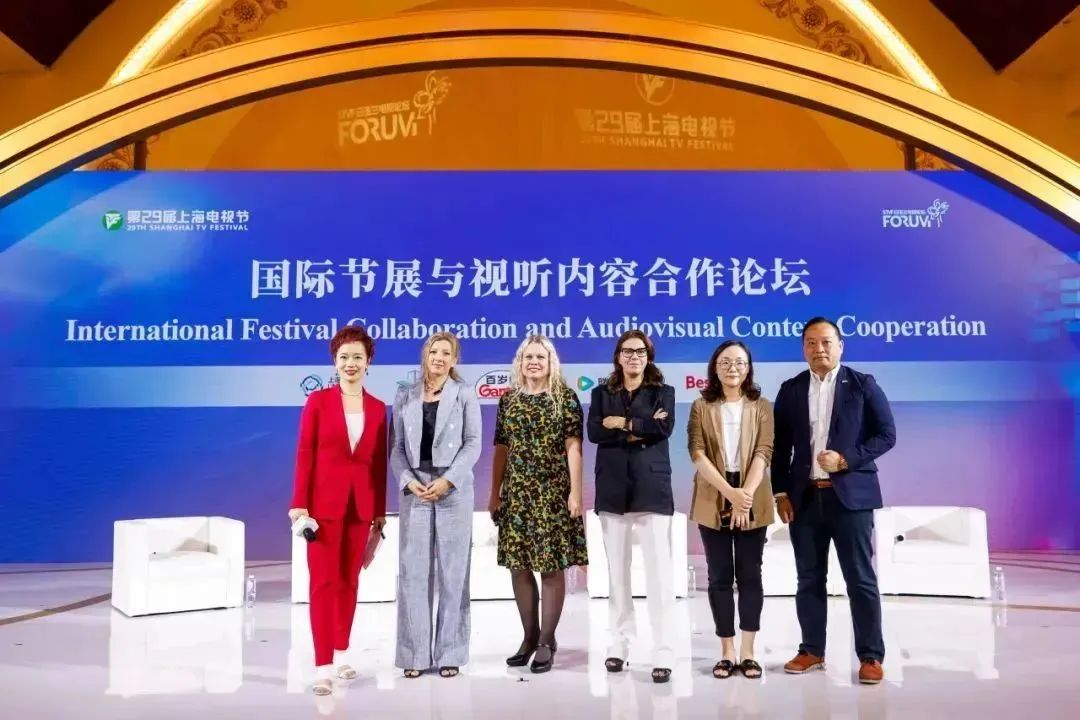

The 29th Shanghai Television Festival (STVF) is hosted by the National Radio and Television Administration, China Media Group, and the Shanghai Municipal People’s Government, and organized by Shanghai Municipal Administration of Radio and Television and Shanghai Media Group, with co-organization by the Administration Committee of Lin-gang Special Area of China (Shanghai) Pilot Free Trade Zone, and special support from Shanghai Lingang Special Area Investment Holding (Group) Co., Ltd.
